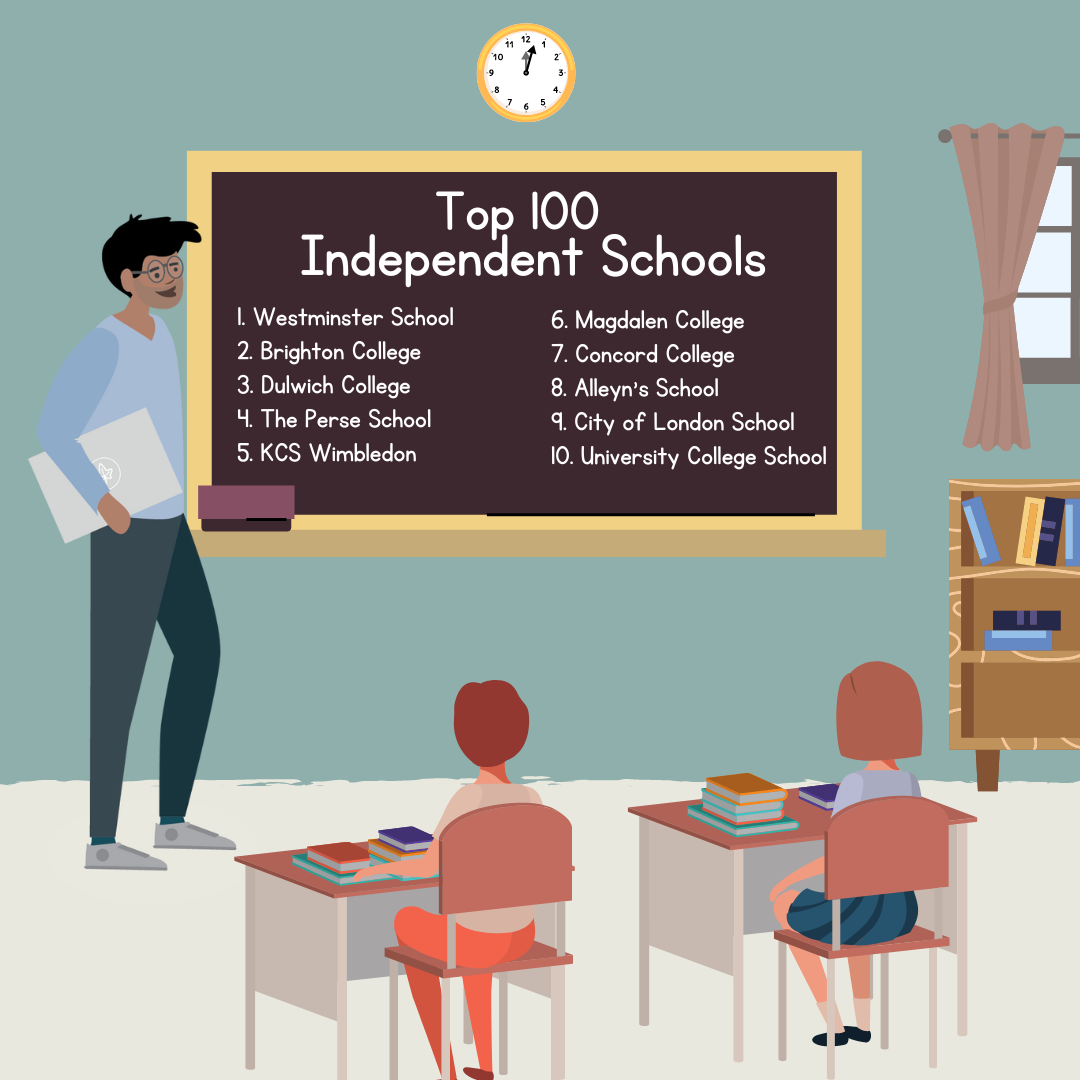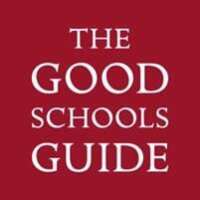Expert Insights
How to Choose a Secondary School: A Guide
Published 7th February 2025 by Alastair

Choosing the right secondary school for your child is a major decision—one that can shape their academic journey, personal development, and future opportunities.
While league tables and Ofsted reports offer useful data, they don’t tell the whole story. What about a school’s culture, teaching style, extracurricular opportunities, and pastoral care? Understanding what truly matters beyond the rankings is key to making an informed choice.
For many parents, the process can feel daunting. From navigating admissions criteria and catchment areas to attending open days and considering entrance exams, it’s easy to feel overwhelmed by the options. That’s why we’re hosting an exclusive webinar, How to Choose a Secondary School for Your Child: Looking Beyond the League Tables. Our expert panel will share insights on what to prioritise when researching schools, how to interpret key information, and practical tips for making the best decision for your child.
This webinar, hosted by education expert Dianne Barratt, will provide practical guidance to help parents look beyond league tables and understand what truly makes a school the best fit for their child.
Choosing a secondary school involves more than just selecting a preferred option. The admissions process can be complex, with various criteria, deadlines, and application procedures to consider. Understanding how schools allocate places, the role of local authorities, and what to do if your chosen school is oversubscribed is crucial to making a smooth transition from primary to secondary education.
The process typically begins when children are in Year 5, with parents researching schools and attending open events before submitting applications in Year 6. Most applications are handled by local authorities, but some schools, such as independent or faith schools, have their own admission processes. Knowing what to expect and planning ahead will ensure you don’t miss important deadlines or overlook key requirements.
Schools use a variety of criteria to determine which pupils are offered places, and these can vary significantly between different schools and local authorities. Many state schools prioritise children who live within a specific catchment area, meaning proximity to the school can play a decisive role. Some schools give preference to siblings of current pupils, ensuring family members can attend the same school. Faith schools often require evidence of religious practice, such as church attendance or a reference from a religious leader.
For grammar schools and some selective academies, performance in an entrance exam is the main factor in securing a place. Other schools use a fair banding system, where children take an assessment to ensure a balanced intake of pupils across different ability levels. Understanding a school's admission criteria early on will help you assess your child's chances of being offered a place and whether additional steps, such as entrance exam preparation, are necessary.
Meeting application deadlines is crucial, as late submissions can severely limit your child’s school options. In most parts of the UK, applications for state secondary schools must be submitted by the end of October when a child is in Year 6. Offers are typically made in March of the following year. Independent schools and grammar schools often have different timelines, with entrance exams taking place as early as September and offers made later in the autumn or winter.
Parents should check their local authority’s website for exact deadlines, as missing them can mean losing out on preferred school choices. Some schools also require supplementary information forms, particularly faith schools, which must be submitted alongside the main application. Keeping track of these deadlines and ensuring all required documents are completed correctly will help avoid unnecessary stress or disappointment.
Selective schools, such as grammar schools and some academies, require children to sit entrance exams, typically known as the 11+. These exams assess verbal reasoning, non-verbal reasoning, mathematics, and English skills. High scores are needed to secure a place, making preparation essential for families considering this route. Private tutors and practice papers are commonly used to help children perform their best.
Some non-selective schools use a system called fair banding, where all applicants take a test, and places are allocated to ensure a mix of students across different ability levels. Unlike the 11+, fair banding is not about achieving a high score but ensuring that admissions are balanced. Parents should check whether the schools they are considering use these assessments and plan accordingly.
Most secondary school applications for state schools are managed through local authorities. Parents submit their choices via an online portal, ranking schools in order of preference. It’s essential to understand how the local authority allocates places, as different councils may have varying policies.
While parents can express preferences, there is no guarantee that a child will be offered a place at their first-choice school. Schools that receive more applications than available places apply their admission criteria to determine who is accepted. This is why researching multiple schools and having realistic options in your selection is important. Some families consider schools beyond their immediate local authority, but this can affect the likelihood of admission, as local children are often prioritised.
Visiting potential schools is one of the most valuable steps in the decision-making process. Open evenings give parents and children the chance to explore school facilities, speak with teachers, and get a feel for the school’s culture. Many schools also offer daytime tours where visitors can see lessons in action and gauge how students interact with staff and peers.
For Year 6 students, some schools run transition days to help them adjust before starting secondary school. These visits can be a deciding factor, as they provide insight into whether a school is the right fit beyond its academic performance. Parents should take note of how staff engage with students, the school’s approach to behaviour management, and the range of extracurricular activities available.
Competition for places at popular schools can be fierce, particularly in areas with high-performing institutions. If a school receives more applications than it has places available, priority is given based on the admission criteria. Children living outside the catchment area or without a sibling at the school may find it harder to secure a spot.
If a child is not allocated a place at their preferred school, parents can appeal the decision. The appeals process involves presenting evidence to an independent panel to demonstrate why a child should be given a place. While appeals can be successful, they are not guaranteed, so it’s important to have backup choices in case the first-choice school is unavailable.
Understanding the school admissions process in advance helps parents make informed decisions and avoid common pitfalls. By researching thoroughly, keeping track of deadlines, and considering a range of school options, families can navigate this important transition with confidence.
Choosing the right secondary school isn’t just about applying on time—it’s about making an informed decision. With so much information available, it can be difficult to know where to start. Beyond academic performance, factors such as school ethos, extracurricular offerings, and pastoral support all contribute to a child’s experience. Parents must look beyond league tables and Ofsted ratings to get a full picture of what a school truly offers.
Ofsted inspections provide a snapshot of a school's overall performance, rating them from "Outstanding" to "Inadequate." While these reports can be useful, they don’t always reflect the day-to-day reality of school life. An "Outstanding" school might be highly academic but lack strong pastoral care, while a "Good" school could be exceptional in areas like mental health support and extracurricular activities. Instead of focusing solely on the rating, parents should read the full report, paying close attention to comments about leadership, behaviour, and student wellbeing.

Understanding a school’s catchment area is essential, as many oversubscribed schools prioritise students who live nearby. Local authority websites often provide interactive maps showing historical catchment areas, though these can change yearly based on demand. Even if a family lives within a catchment zone, there is no guarantee of admission, so it’s important to check recent intake patterns and consider backup options.
When applying for a school place for your child, one of the biggest factors influencing your chances of admission is where you live. While religious and selective schools have additional criteria, most schools prioritise proximity when allocating places. However, catchment areas aren’t as straightforward as they might seem.
What is a Catchment Area?
A common misconception is that living within a specific area guarantees a school place. In reality, catchment areas change each year based on applications. While some schools may admit all applicants from a certain neighbourhood, others may use various distance-based criteria to determine admissions.
Here’s how different catchment systems work:
1. Straight Line Distance Catchments
This method is one of the simplest. Schools offer places based on a ranked list of applicants, measured by how far they live from the school in a straight line. The final place determines the "cut-off" distance for that year. However, this distance can fluctuate based on factors like sibling priority. For example, at Henry Cavendish School in London, the effective catchment area shrank from 0.55 miles in 2018 to just 0.25 miles in 2019 due to an increase in sibling applications.
Used in: Most urban areas such as London, Manchester, Birmingham, and Bristol.
2. Walking Distance Catchments
Rather than measuring distance as the crow flies, some councils assess eligibility based on the shortest safe walking route. This can create irregular catchment shapes influenced by local road layouts and safety considerations, such as lit paths.
Used in: Areas like Richmond-upon-Thames, Newham, and Medway.
3. Priority Admission Areas (PAAs)
Some schools designate a fixed geographical area where local children are prioritised. If demand is high, even children within the PAA might not be guaranteed a place. Depending on application numbers, the actual catchment area may:
- Be smaller than the PAA (if demand is high).
- Match the PAA exactly.
- Extend beyond the PAA if places remain.
Used in: More rural areas or newly established schools aiming to serve their local community. ham.
4. Nearest School Priority Areas
Some councils prioritise children applying to their closest school. This system divides an area into zones, each linked to a specific school. However, not all schools in an area always participate in the scheme, making it difficult for parents to predict admissions.
Used in: Suburban and urban areas aiming to maintain local school communities, such as Leeds, Hertfordshire, and Surrey.
What This Means For Parents
Understanding school catchment areas is key to making informed choices when applying for school places. Checking past admission distances and consulting local authority policies can help you gauge your chances, but always be aware that these figures change annually. Planning ahead and considering backup options is crucial for securing the best educational start for your child.

Exam results and performance tables provide insight into a school’s academic success, but they should be interpreted carefully. High GCSE and A-Level results might indicate strong teaching, but they could also reflect a selective intake rather than added value. Some schools excel in helping students progress beyond their starting point, even if their overall grades are lower than those of a highly selective school. Parents should look at progress scores, subject-specific strengths, and whether the school offers a broad curriculum that aligns with their child’s interests.
We've written two guides on both Grammar and Independent Schools, ranking them on their best GCSE and A Level Results:
Best Grammar Schools in the UK
Best Private Schools in the UK
A well-rounded education goes beyond the classroom. Schools with strong extracurricular programmes can help students develop confidence, leadership skills, and social connections. From sports teams and music groups to coding clubs and debating societies, these activities can have a significant impact on a child's personal development. When researching schools, parents should consider what opportunities are available and how well they align with their child’s interests and strengths.
Hearing from other parents and students can provide valuable insight into a school’s culture. Websites such as The Good Schools Guide and Mumsnet offer independent reviews, while local Facebook groups can give honest, first-hand experiences. However, opinions can be subjective, so it’s important to read multiple sources to get a balanced perspective. If possible, speaking directly to parents with children at the school can be even more informative than online reviews.
Every school is required to publish key information on its website, including policies, curriculum details, and contact information. Parents should pay particular attention to pastoral care policies, behaviour expectations, and how the school supports students with additional needs. Some schools, particularly faith schools, require supplementary information forms as part of the application process, so checking these details early can help avoid last-minute surprises.
Every child deserves a school environment where they feel supported, included, and able to reach their full potential. For children with special educational needs and disabilities (SEND), finding the right school requires careful research to ensure they receive the appropriate resources, teaching strategies, and pastoral care. Parents must look beyond general academic performance and consider how well a school caters to children with additional learning or physical needs. Some schools offer extensive SEND provisions, while others may have limited resources or experience in supporting children with specific challenges. Understanding what to look for will help parents make an informed choice.
3.1For children with significant and complex needs, an Education, Health, and Care (EHC) plan plays a crucial role in determining their school placement. An EHC plan is a legally binding document that outlines a child’s specific needs and the support required to meet them. It can influence which schools a child is eligible for, including mainstream schools with strong SEND provisions or specialist schools that cater specifically to children with disabilities.
Parents should check whether their preferred schools can fully meet the needs outlined in their child’s EHC plan. Some mainstream schools have strong SEND departments and inclusion teams, while others may suggest alternative placements if they cannot provide the necessary support. Speaking with the school’s SENDCO (Special Educational Needs and Disabilities Coordinator) early in the application process is vital to understanding how well a school aligns with the EHC plan’s requirements.
Each school is required to publish a Special Educational Needs and Disabilities (SEND) information report, detailing how they identify, assess, and support students with additional needs. This report should outline the type of interventions available, whether teaching staff receive specialist SEND training, and how the school adapts the curriculum to accommodate different learning styles and physical disabilities.
It’s also important to assess how a school integrates SEND students into mainstream education. Do they offer one-on-one support? Are there small group interventions? Is there a dedicated SEND base or quiet space for children who need sensory breaks? For children with physical disabilities, accessibility is key—parents should check whether the school has ramps, lifts, adapted toilets, and specialist equipment. A school’s commitment to inclusion should be evident in both its policies and its everyday practice.
While academic results are often a key factor in choosing a school, parents of SEND children should also focus on progress measures rather than raw performance data. Some schools may not have the highest GCSE results, but they might excel in helping SEND students make significant progress from their individual starting points.
Checking a school’s published performance data for SEND students can provide insight into how well they support children with additional needs. Progress 8 scores, which measure the improvement students make from primary school to GCSEs, can be a helpful indicator. Schools that prioritise inclusion often have strong SEND support teams that ensure students receive personalised learning plans to help them achieve their full potential.
A school’s approach to behaviour management is particularly important for children with SEND, especially those with conditions such as autism, ADHD, social communication difficulties, or emotional regulation challenges. Some schools adopt a strict, zero-tolerance behaviour policy, which may not always be suitable for neurodivergent students who struggle with sensory overload or processing difficulties.
Parents should look for behaviour policies that emphasise positive reinforcement, individualised strategies, and restorative approaches rather than excessive punishments or exclusions. Schools that offer pastoral support, such as wellbeing mentors, sensory rooms, or mental health counsellors, often create a more inclusive environment for SEND students. For children with physical disabilities, schools should also have clear policies on accessibility and accommodations during lessons and school activities.
Local councils play a key role in SEND school placements, particularly for children with EHC plans. Parents can apply for a specific school through their local authority, and if their first choice is not available, the council must suggest an alternative that meets the child’s needs.
For children without an EHC plan, the admissions process follows the standard route, though some schools prioritise places for students with additional needs. If a child is refused a place due to oversubscription, parents can appeal on the grounds that the school is better suited to meet their child’s educational requirements. Many councils also offer specialist advisory services to help families navigate the SEND admissions process, including mediation services if disagreements arise over school placements.
For children from disadvantaged backgrounds or those eligible for Pupil Premium funding, additional financial support may be available. Schools receive Pupil Premium funding to help close the attainment gap, often using the money to provide extra tuition, SEND resources, or pastoral care. Parents should ask how a school uses these funds to support children with SEND, as some institutions invest heavily in targeted interventions, while others may offer fewer resources.
Additionally, some independent schools offer bursaries or scholarships for students with SEND, particularly if they have a specific talent in areas such as music, sport, or the arts. Exploring these options could provide access to schools that might otherwise be financially out of reach.
Finding the right secondary school for a child with SEND requires thorough research and careful consideration. The best choice will be one where the child feels supported, included, and able to thrive both academically and socially. By speaking with SENDCOs, attending open days, and reviewing school policies, parents can ensure they select a school that truly meets their child's unique needs.
The UK education system offers a variety of school types, each with its own admission process, curriculum, and approach to learning. While academic performance is a major factor, parents should also consider the ethos, class sizes, and extracurricular opportunities different schools provide. Choosing between state-funded and independent education, selective and non-selective schools, or even alternative routes like home education requires an understanding of the key differences between these options.
The majority of children in the UK attend state-funded secondary schools, which are free to attend and primarily funded by the government. These schools fall into two main categories: academies and local authority comprehensive schools.
Academies operate independently from local councils, meaning they have more freedom over their curriculum, term dates, and staffing. While they must still follow national guidelines, academies can introduce specialised subjects or unique teaching approaches. Some are sponsored by universities, businesses, or charities, which can influence their ethos and focus.
Local authority comprehensive schools, on the other hand, are directly overseen by the local council. They must follow the National Curriculum and adhere to council-set policies regarding admissions and staffing. While they vary in quality, comprehensive schools are designed to provide a broad education for children of all abilities, rather than selecting students based on academic performance.
Free schools are a type of academy but are set up by groups such as parents, charities, or educational organisations rather than being converted from an existing school. They receive government funding but have the freedom to shape their own curriculum and policies. Some focus on particular subjects, such as STEM (science, technology, engineering, and maths), while others prioritise a specific teaching philosophy, such as Montessori or Steiner education.
Non-selective schools are open to all students, regardless of ability, and do not use entrance exams or academic selection. Most comprehensive schools fall into this category, offering mixed-ability classes rather than streaming students based on performance. This approach allows for a diverse learning environment where students of all academic levels are supported.
Private schools, also known as independent schools, charge fees instead of being funded by the government. They often have smaller class sizes, specialised facilities, and a wider range of extracurricular opportunities. Many private schools follow a different curriculum, such as the International Baccalaureate (IB) or a more traditional, academically rigorous syllabus.
One of the key advantages of private schools is the greater flexibility they have in teaching methods and resources. They often provide extensive support for high-achieving students or those with specific learning needs. However, fees can be significant, though some schools offer scholarships or bursaries based on merit or financial need.

For parents seeking a personalised education experience for their child, home schooling is an alternative to mainstream schooling. In the UK, parents have the legal right to educate their child at home, provided they ensure a "suitable" education that meets the child’s needs.
Home schooling allows for a tailored learning experience, enabling children to progress at their own pace. Some families choose this route due to concerns about mainstream schooling, special educational needs, or lifestyle preferences, such as travelling extensively. However, home education requires dedication, as parents must take responsibility for planning lessons, assessing progress, and ensuring their child receives a well-rounded education. Unlike schools, home-educated children do not have to follow the National Curriculum, but they can still take GCSEs and A-levels through external examination centres.
While most families apply to schools within their local council area, some parents look beyond their immediate location to find the best fit for their child. However, applying to a school in a neighbouring authority can come with challenges. Many schools prioritise children within their own catchment area, meaning those applying from outside may have a lower chance of being offered a place.
Parents considering schools across local authority borders should check the admissions policies carefully. Some councils operate separate application systems, requiring parents to apply directly to the school rather than through their home local authority. In areas where competition for school places is high, moving house or using a relative’s address to gain admission can be tempting, but councils have strict measures in place to prevent fraudulent applications.
Grammar schools are state-funded but select students based on academic ability, typically through the 11+ entrance exam. These schools often achieve strong exam results and are known for their rigorous academic environment. However, admission is highly competitive, with some areas having pass rates below 20% due to the volume of applicants.
Selective education can be a good fit for high-achieving students who thrive in academically focused environments. However, the pressure of entrance exams and maintaining high performance can be challenging for some children. Parents should carefully consider whether a grammar school’s academic intensity aligns with their child’s abilities and learning style.
Many parents wonder whether the type of school their child attends significantly impacts future success. Our upcoming webinar, How to Choose a Secondary School for Your Child: Looking Beyond the League Tables, will explore this question, featuring expert insights into the strengths and limitations of different school types.
By understanding the differences between state-funded, independent, and alternative education options, parents can make a choice that best supports their child’s needs and aspirations. The right school is not necessarily the highest-ranked—it’s the one where a child will thrive both academically and personally.
After weeks—or even months—of research, school visits, and navigating the admissions process, narrowing down your choices can still feel overwhelming. While there is no perfect formula for selecting the right secondary school, focusing on key factors such as academic performance, extracurricular opportunities, and student wellbeing will help you make a confident, informed decision. Below are some practical steps to help finalise your school choice.
Rather than focusing on just one "ideal" school, it’s important to create a shortlist of schools that all meet your child’s needs. This ensures you have strong alternatives if your first choice isn’t available.
Start by reviewing your initial research and school visits. Have your perceptions changed since you first began this process? Sometimes, a school that seemed perfect on paper might not have felt right in person, while another may have impressed you more than expected. Consider practical factors such as the school’s location and catchment area—will the commute be manageable for your child on a daily basis? Think about how well the school’s ethos, teaching approach, and extracurricular offerings match your child’s strengths and interests.
It’s also helpful to rank your shortlisted schools in order of preference. While it may seem tempting to put all your energy into securing a place at your top choice, ensuring your second and third options are also strong contenders will ease the stress of the application process.
At Ivy Education, we understand that choosing a school is about more than just grades. Our expert consultants work with families to find the best-fit school for each child, taking into account their academic ability, personal interests, and long-term goals. If you're still unsure about your final decision, our tailored consultancy services can provide personalised advice to help you move forward with confidence.
Academic performance is often the first thing parents look at when choosing a school. However, while GCSE and A-Level results can be useful indicators, they don’t tell the whole story. A school with slightly lower results might have a more supportive learning environment or greater opportunities for personal development.
If your child is particularly talented in an area such as music, sport, or drama, looking at a school’s extracurricular offering is just as important. Some schools have specialist programmes or partnerships with external organisations that can provide unique enrichment opportunities. Others may have strong pastoral care, mentoring schemes, or leadership initiatives that help students develop key life skills beyond the classroom.
One of the best ways to get an honest view of a school is to speak with parents and students who are already part of the community. While open days provide a useful introduction, they are designed to present the school in the best possible light. First-hand accounts from families who have experienced the school daily can give you a clearer idea of what to expect.
Local parent groups—both online and in-person—can be a great resource. Facebook communities, school WhatsApp groups, and forums like Mumsnet often feature discussions about schools, allowing you to hear from a wide range of perspectives. However, bear in mind that experiences are subjective, and it’s best to look for common themes rather than focusing on individual negative or overly glowing reviews.
If possible, speak directly to students during open events. Ask them what they enjoy most about the school and whether they feel well-supported by teachers. Their enthusiasm—or lack thereof—can be an excellent indicator of the school’s atmosphere.
Choosing a secondary school isn’t just about the next year—it’s about the next five to seven years. A school may seem great for a Year 7 student, but will it continue to provide the right opportunities and challenges as your child grows?
Look at the school’s GCSE and A-Level subject offerings. Some schools specialise in certain areas, such as STEM subjects, creative arts, or languages, which may be relevant depending on your child’s interests. Check if they have a Sixth Form or whether most students leave for another institution after GCSEs. If your child is already considering university or a particular career path, researching the school’s track record in post-16 education can be valuable.
Beyond academics, consider the school’s long-term commitment to student development. Do they have strong career guidance and university preparation programmes? What about work experience opportunities or links with industries and employers? A school that actively supports students beyond their early years can have a significant impact on their future success.
Open days offer a unique opportunity to experience the school environment first-hand. Walking the corridors, observing lessons, and speaking to staff and students can give a strong sense of whether a school is the right fit.
To get the most out of an open day:
If attending in person isn’t possible, many schools now offer virtual tours. These can be a useful alternative, but they require a more proactive approach. Request video footage of key areas, ask for student testimonials, and take advantage of any live Q&A sessions with the headteacher or senior staff.

Choosing a secondary school is one of the most important decisions in a child’s education, and it’s not one to be rushed. By understanding the admissions process, researching different school types, considering special educational needs and disabilities (SEND) provisions, and balancing academic performance with extracurricular opportunities, parents can make an informed choice that best suits their child’s personality, strengths, and ambitions.
Starting early is key. The best decisions are made when parents have time to visit schools, gather insights from other families, and carefully weigh their options. Open days, performance data, and first-hand feedback all play a role in shaping this decision—but at the heart of it, the right school is the one where a child will feel happy, supported, and inspired to learn.
To help parents navigate this process with confidence, we’re hosting a free webinar: How to Choose a Secondary School for Your Child: Looking Beyond the League Tables. Our expert panel will share invaluable insights into what truly matters when selecting a school, covering everything from admissions criteria to school culture and long-term success factors.
It’s best to start researching in Year 5 to allow time for school visits and understanding the admissions process.
Ofsted ratings provide useful insights, but they don’t always reflect a school’s culture, pastoral care, or suitability for your child.
Yes, but places are usually allocated based on priority criteria, and local students are often given preference.
Pay attention to the school’s atmosphere, student behaviour, teacher engagement, and the quality of facilities.
Check the school’s SEND information report, speak with the SENDCO, and ask about available interventions and specialist staff.
You can join a waiting list, appeal the decision, or explore alternative school options in your area.
No, some academies, independent schools, and selective state schools also require entrance exams.
Look at performance tables, progress scores, subject strengths, and GCSE/A-Level results in context rather than just league rankings.
Academies have more freedom over their curriculum and policies, while comprehensives are overseen by local authorities.
Friendships are important, but the best choice is a school that meets your child’s academic and personal needs long-term.
















